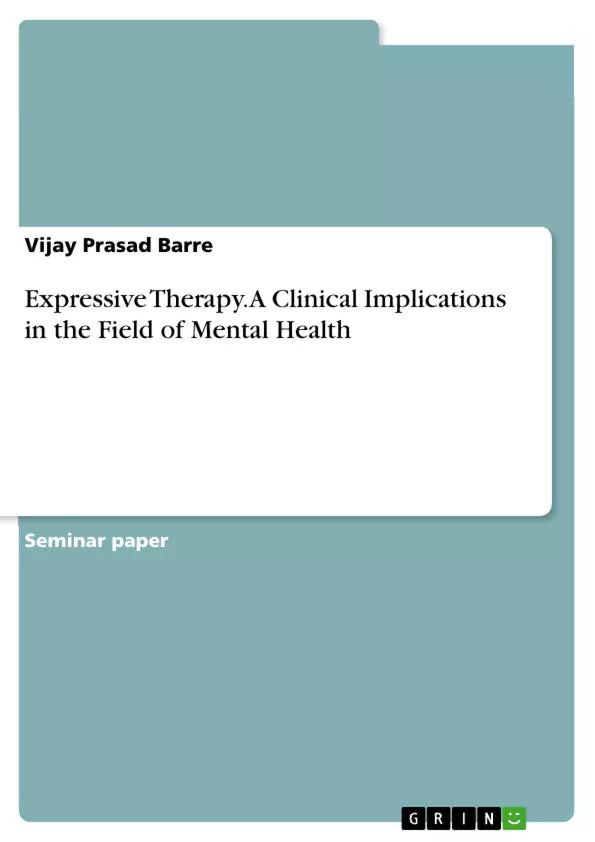Expressive therapy is also known as the expressive therapies, expressive arts therapy or creative arts therapy, is the use of the creative arts as a form of psychotherapy.Expressive therapy is predicated on the assumption that people can heal through use of imagination and the various forms of creative expressions.All expressive therapists tapping of the imagination, a person can examine the body, feelings, emotions and his or her thought process. Therapist and client move freely between drawing, dancing, music, drama, and poetry.
Inhaltsverzeichnis (Table of Contents)
- Expressive Therapy
- Types of Expressive Therapies
- Art Therapy
Zielsetzung und Themenschwerpunkte (Objectives and Key Themes)
This text provides an overview of expressive therapy, exploring its use in mental health. It examines the various expressive therapies available and their clinical applications.
- Expressive therapy as a form of psychotherapy
- The role of imagination and creative expression in healing
- Types of expressive therapies and their applications
- The benefits of art therapy for mental well-being
- Art therapy as a mode of communication and self-expression
Zusammenfassung der Kapitel (Chapter Summaries)
- Expressive Therapy: This chapter introduces the concept of expressive therapy, defining it as a form of psychotherapy that utilizes creative arts. It highlights the central role of imagination and creative expression in the healing process. The chapter further discusses how expressive therapists help clients explore their bodies, feelings, emotions, and thought processes through various artistic mediums.
- Types of Expressive Therapies: This section lists various types of expressive therapies, including art therapy, dance therapy, drama therapy, music therapy, sand therapy, clay therapy, and writing therapy.
- Art Therapy: This chapter focuses on art therapy as a mental health profession. It explains how art acts as a mode of communication and emphasizes its role in enhancing the physical, mental, and emotional well-being of individuals. The chapter also discusses the various benefits of art therapy, such as conflict resolution, skill development, behavior management, stress reduction, and self-esteem enhancement.
Schlüsselwörter (Keywords)
The core keywords and focus topics of this text include expressive therapy, creative arts therapy, psychotherapy, imagination, healing, art therapy, dance therapy, drama therapy, music therapy, sand therapy, clay therapy, writing therapy, mental health, well-being, communication, and self-expression.
- Quote paper
- Dr. Vijay Prasad Barre (Author), 2017, Expressive Therapy. A Clinical Implications in the Field of Mental Health, Munich, GRIN Verlag, https://www.hausarbeiten.de/document/512161


